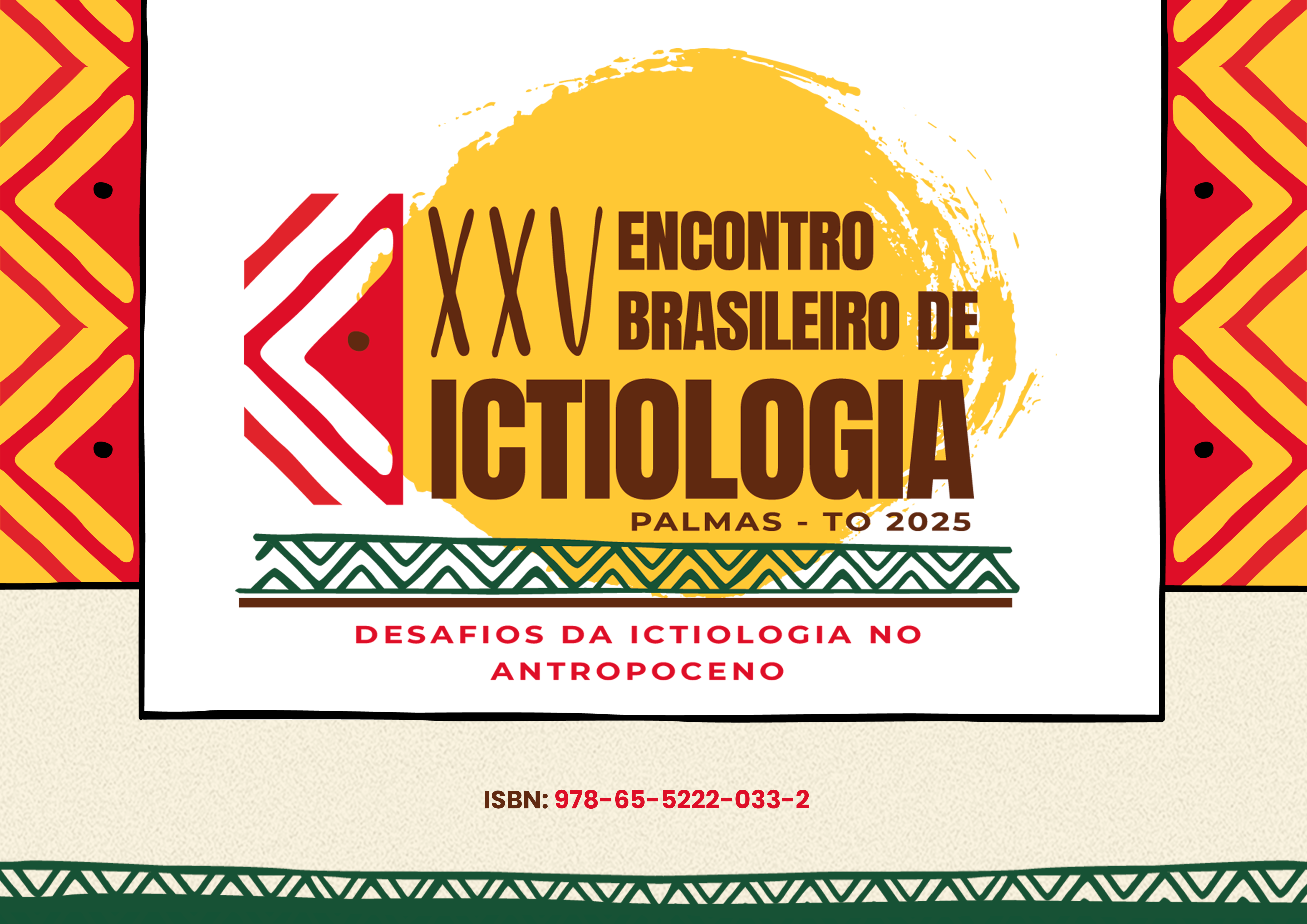KNOWLEDGE GAPS IN THE CALLICHTHYIDAE FAMILY OF PERU: TAXONOMY, DISTRIBUTION, PHYLOGENETIC RELATIONSHIPS, AND FEEDING HABITS
"2025-02-12 10:36:07" // app/Providers/../Base/Publico/Artigo/resources/show_includes/info_artigo.blade.php
App\Base\Administrativo\Model\Artigo {#1845 // app/Providers/../Base/Publico/Artigo/resources/show_includes/info_artigo.blade.php #connection: "mysql" +table: "artigo" #primaryKey: "id" #keyType: "int" +incrementing: true #with: [] #withCount: [] +preventsLazyLoading: false #perPage: 15 +exists: true +wasRecentlyCreated: false #escapeWhenCastingToString: false #attributes: array:35 [ "id" => 120189 "edicao_id" => 384 "trabalho_id" => 704 "inscrito_id" => 1589 "titulo" => "KNOWLEDGE GAPS IN THE CALLICHTHYIDAE FAMILY OF PERU: TAXONOMY, DISTRIBUTION, PHYLOGENETIC RELATIONSHIPS, AND FEEDING HABITS" "resumo" => "Fish of the family Callichthyidae, with 233 valid species, are important representatives of the Neotropical aquatic fauna, but their diversity, distribution, and biology remain poorly understood in Peru. Despite their relevance, studies on their taxonomy, ecology, and evolution show significant deficiencies. This study quantifies the knowledge gaps regarding the Linnean (taxonomy), Wallacean (geographical distribution), Darwinian (evolutionary relationships), and Raunkiæran (feeding habits) deficits for the family in the Peruvian context. The analysis is based on a review of scientific literature (species descriptions and taxonomic revisions), databases from ichthyological collections (MUSM, IIAP, UNAMAD, and foreign collections), and records on species distribution and ecology. Described species from Peru, listed in valid ichthyological inventories with collection codes, as well as sampling areas and available information on phylogeny and feeding habits, were evaluated. The results reveal that a large part of Callichthyidae diversity in Peru remains uncertain. Currently, 52 valid species are recognized, distributed across 9 genera, representing 22% of the global diversity of the family, indicating a clear Linnean deficit. Only a small fraction of the country has been well-sampled, with many species recorded in fewer than 5 sampling points, highlighting a Wallacean deficit. Although phylogenetic relationships have been recently studied, more than 50% of the Peruvian species have not been included in phylogenetic analyses, emphasizing the Darwinian deficit. Furthermore, information on feeding habits mostly comes from aquarists and specimens collected outside of Peru, evidencing a Raunkiæran deficit. An integrated effort involving taxonomists, ecologists, and biogeographers is needed to improve the understanding of Callichthyidae in Peru." "modalidade" => "Pôster (PO)" "area_tematica" => "AT 02 - Taxonomia e Sistemática" "palavra_chave" => ", , , , " "idioma" => "Português" "arquivo" => "TRABALHO__EV205_MD4_ID1589_TB704_17102024130221.pdf" "created_at" => "2025-02-13 11:08:16" "updated_at" => null "ativo" => 1 "autor_nome" => "PATRICIA YTURBE MORI" "autor_nome_curto" => "PATRICIA" "autor_email" => "pym180794@gmail.com" "autor_ies" => "OUTRA / MINHA INSTITUIÇÃO NÃO ESTÁ NA LISTA" "autor_imagem" => "" "edicao_url" => "anais-do-ebi---encontro-brasileiro-de-ictiologia" "edicao_nome" => "Anais do EBI - Encontro Brasileiro de Ictiologia" "edicao_evento" => "XXV ENCONTRO BRASILEIRO DE ICTIOLOGIA" "edicao_ano" => 2025 "edicao_pasta" => "anais/ebi/2025" "edicao_logo" => null "edicao_capa" => "67b49e4d8c758_18022025115053.png" "data_publicacao" => null "edicao_publicada_em" => "2025-02-12 10:36:07" "publicacao_id" => 116 "publicacao_nome" => "Revista EBI" "publicacao_codigo" => "978-65-5222-033-2" "tipo_codigo_id" => 2 "tipo_codigo_nome" => "ISBN" "tipo_publicacao_id" => 1 "tipo_publicacao_nome" => "ANAIS de Evento" ] #original: array:35 [ "id" => 120189 "edicao_id" => 384 "trabalho_id" => 704 "inscrito_id" => 1589 "titulo" => "KNOWLEDGE GAPS IN THE CALLICHTHYIDAE FAMILY OF PERU: TAXONOMY, DISTRIBUTION, PHYLOGENETIC RELATIONSHIPS, AND FEEDING HABITS" "resumo" => "Fish of the family Callichthyidae, with 233 valid species, are important representatives of the Neotropical aquatic fauna, but their diversity, distribution, and biology remain poorly understood in Peru. Despite their relevance, studies on their taxonomy, ecology, and evolution show significant deficiencies. This study quantifies the knowledge gaps regarding the Linnean (taxonomy), Wallacean (geographical distribution), Darwinian (evolutionary relationships), and Raunkiæran (feeding habits) deficits for the family in the Peruvian context. The analysis is based on a review of scientific literature (species descriptions and taxonomic revisions), databases from ichthyological collections (MUSM, IIAP, UNAMAD, and foreign collections), and records on species distribution and ecology. Described species from Peru, listed in valid ichthyological inventories with collection codes, as well as sampling areas and available information on phylogeny and feeding habits, were evaluated. The results reveal that a large part of Callichthyidae diversity in Peru remains uncertain. Currently, 52 valid species are recognized, distributed across 9 genera, representing 22% of the global diversity of the family, indicating a clear Linnean deficit. Only a small fraction of the country has been well-sampled, with many species recorded in fewer than 5 sampling points, highlighting a Wallacean deficit. Although phylogenetic relationships have been recently studied, more than 50% of the Peruvian species have not been included in phylogenetic analyses, emphasizing the Darwinian deficit. Furthermore, information on feeding habits mostly comes from aquarists and specimens collected outside of Peru, evidencing a Raunkiæran deficit. An integrated effort involving taxonomists, ecologists, and biogeographers is needed to improve the understanding of Callichthyidae in Peru." "modalidade" => "Pôster (PO)" "area_tematica" => "AT 02 - Taxonomia e Sistemática" "palavra_chave" => ", , , , " "idioma" => "Português" "arquivo" => "TRABALHO__EV205_MD4_ID1589_TB704_17102024130221.pdf" "created_at" => "2025-02-13 11:08:16" "updated_at" => null "ativo" => 1 "autor_nome" => "PATRICIA YTURBE MORI" "autor_nome_curto" => "PATRICIA" "autor_email" => "pym180794@gmail.com" "autor_ies" => "OUTRA / MINHA INSTITUIÇÃO NÃO ESTÁ NA LISTA" "autor_imagem" => "" "edicao_url" => "anais-do-ebi---encontro-brasileiro-de-ictiologia" "edicao_nome" => "Anais do EBI - Encontro Brasileiro de Ictiologia" "edicao_evento" => "XXV ENCONTRO BRASILEIRO DE ICTIOLOGIA" "edicao_ano" => 2025 "edicao_pasta" => "anais/ebi/2025" "edicao_logo" => null "edicao_capa" => "67b49e4d8c758_18022025115053.png" "data_publicacao" => null "edicao_publicada_em" => "2025-02-12 10:36:07" "publicacao_id" => 116 "publicacao_nome" => "Revista EBI" "publicacao_codigo" => "978-65-5222-033-2" "tipo_codigo_id" => 2 "tipo_codigo_nome" => "ISBN" "tipo_publicacao_id" => 1 "tipo_publicacao_nome" => "ANAIS de Evento" ] #changes: [] #casts: array:14 [ "id" => "integer" "edicao_id" => "integer" "trabalho_id" => "integer" "inscrito_id" => "integer" "titulo" => "string" "resumo" => "string" "modalidade" => "string" "area_tematica" => "string" "palavra_chave" => "string" "idioma" => "string" "arquivo" => "string" "created_at" => "datetime" "updated_at" => "datetime" "ativo" => "boolean" ] #classCastCache: [] #attributeCastCache: [] #dates: [] #dateFormat: null #appends: [] #dispatchesEvents: [] #observables: [] #relations: [] #touches: [] +timestamps: false #hidden: [] #visible: [] +fillable: array:13 [ 0 => "edicao_id" 1 => "trabalho_id" 2 => "inscrito_id" 3 => "titulo" 4 => "resumo" 5 => "modalidade" 6 => "area_tematica" 7 => "palavra_chave" 8 => "idioma" 9 => "arquivo" 10 => "created_at" 11 => "updated_at" 12 => "ativo" ] #guarded: array:1 [ 0 => "*" ] }



